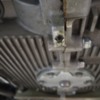.
Jason, as you're discovering, drivers of these aircooled engines learn early on to distinguish between leaks and 'seepage'. Seepage is a leak you choose to ignore.
It's usually owners of new cars who are bothered by seepage because none of the more serious engine and mechanical problems that will inevitably follow have had time to surface yet. In time, you'll either pretend not to see the seepage altogether or wipe it off quickly with a rag while trying to figure out why the inside sidewall of one of your rear tires is suddenly covered with oil. And, by the way, if you get into the habit of not looking under the car, you'll never have to deal with seepage at all.
The creators of these engines incorporated seepage in the design as a means to sharpen our observational and deductive skills. Seepage never actually occurs at the place where the oil accumulates. The source is generally somewhere upwind or upstream, but not necessarily. Things as obscure as capillary action will move the oil around and I'm convinced that other forces not yet discovered by science are involved as well.
My particular car is subject to temporal seepage. Nothing ever seeps while I'm watching. I can wipe off the seepage after a drive and if it stays parked for two months, there's no subsequent oil accumulation. The more gullible will say that this means that small gaps open as the engine is driven and heats up, or that crankcase pressure is to blame, but I know the sources are supernatural.
The only good news is that most of us now have a pretty steady flow of Amazon boxes through our garages, and that is some of the most absorbent cardboard available.
.




